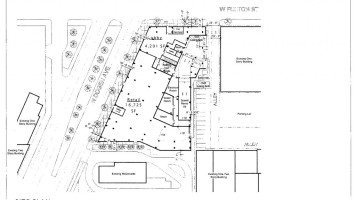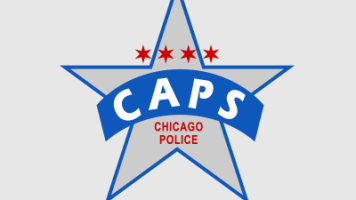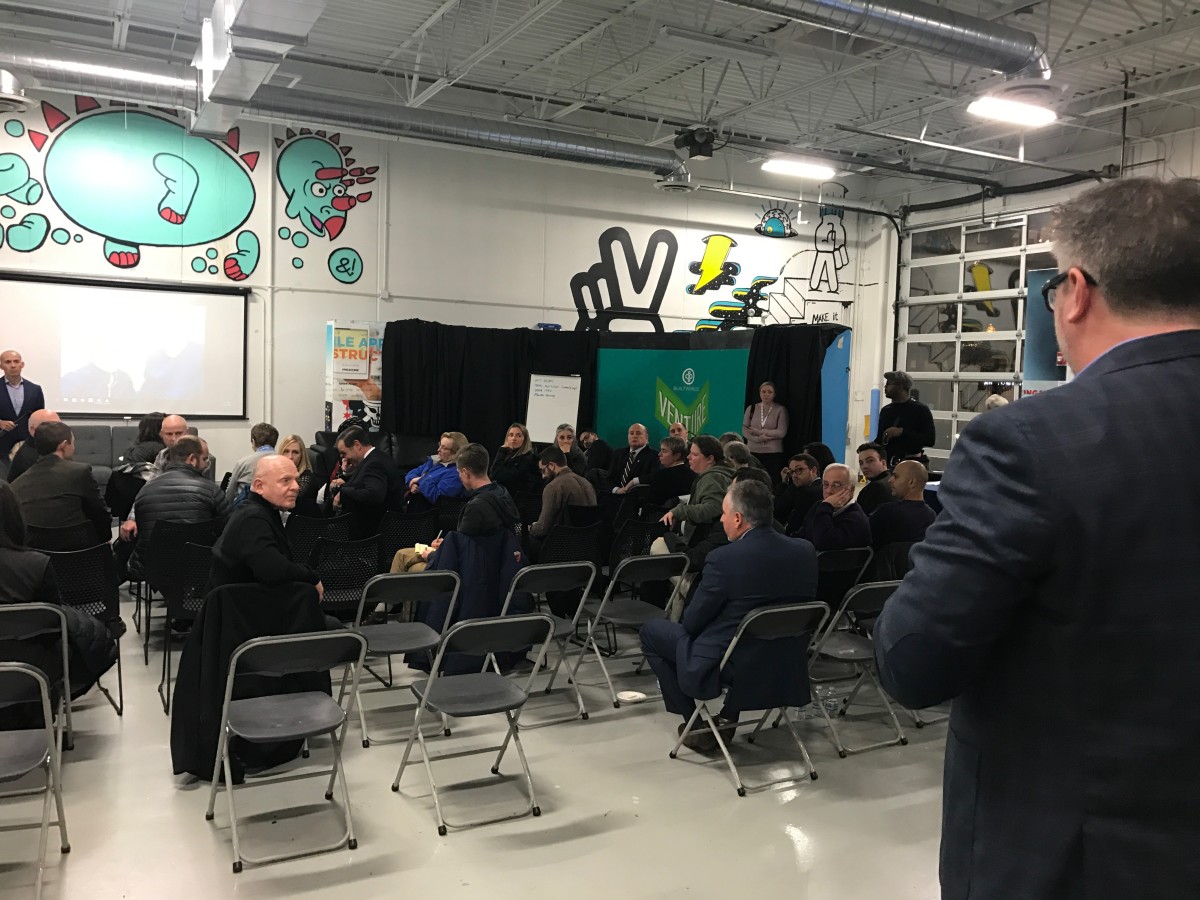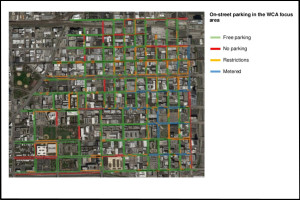In May of 2016 the West Central Association (WCA), the chamber of commerce for the West Loop, Near West Side, University Village/Little Italy, and Illinois Medical District, retained the services of the Metropolitan Planning Council (MPC) to compile guidelines for future growth in the WCA service area. The WCA, MPC, and the City of Chicago Department of Planning and Development presented these guidelines to the community, including several representatives of Neighbors of West Loop (NoWL), at a meeting on November 30, 2016.
NoWL commends WCA for initiating this process, which is focused on advancing the significant economic growth that has transpired over the past 20+ years across our neighborhood. We look forward to working with WCA to help realize many of the report’s recommendations.
The report addresses two areas: land use and parking. The following is a summary of the report and NoWL’s perspective on the report recommendations.
Land Use
The report demonstrates that the growing West Loop area is a revenue generator for the City, which has lost population in recent years. The report further emphasizes that “the neighborhood’s growth is providing an essential base from which to fund city services”, noting that property taxes in the area have increased 15% more that the rest of the city between 2010 and 2014.
The report identifies a handful of vacant lots and over 20 surface parking lots that MPC believes could support future development. The report goes on to note that architectural requirements for development projects in the Fulton-Randolph Market District (e.g., that they “be compatible with the historic context of the district”) are limiting the potential for development and the associated property tax revenues for the city.
The WCA/MPC report supports the expanded Downtown zoning in the West Loop and recommends that aldermen “limit community input in order to prevent delays” in the development approval process. Neighbors of West Loop strongly opposes this recommendation for several reasons. We believe that community involvement is critical to creating new developments that will exist in harmony with the neighborhood, including its history and its current and future residents. There are many examples of developers working with community groups in the West Loop to address resident concerns and improve their projects in the process. Altering the required community involvement stage of the development process would be detrimental to the neighborhood and would prematurely limit its growth.
The WCA/MPC report recommends that the City prioritize adding more density in the WCA service area, in particular that development expansion occur in the Near West Side (west of Ashland Avenue). Neighbors of West Loop supports increased development in the West Loop that is commensurate with existing density levels and strongly encourages development of available land west of Ashland to bring more economic opportunity to the area. Along these lines, NoWL feels that adhering to density requirements for new developments in the Fulton Market District will help lead developers west. We are already seeing this take place with projects like Ashland-Fulton-Walnut at 240 N. Ashland.
The WCA/MPC report recommends a series of transportation improvements to guide visitors to and around the West Loop. In particular, the report calls for a bike lane on Ashland (which is not currently shown in the City’s Streets for Cycling Plan 2020) and a Metra station at Ogden Avenue. Neighbors of West Loop supports these improvements and the benefits they would bring to local residents.
Parking
The report notes that there is an imbalance of parking demand and supply in the area bounded by Ashland, Halsted, I-290, and Hubbard, which the report attributes to the fact that most (85%) of parking in this area is free. With a focus on optimizing West Loop parking for commercial use, the report targets a parking usage rate of 85% to support the turnover desired by businesses.
The WCA/MPC report recommends expanding parking meters to commercial areas in the West Loop, extending metering hours, operating meters on Sundays, and introducing performance pricing to increase meter rates in times of high demand. While each of these measures would have a desired positive effect on parking turnover for commercial use, it is unclear what impact they would have on residential parking. In particular, more information is needed about where new metered parking would be introduced. Until these details are provided, Neighbors of West Loop cannot establish a position on these recommendations. However, we would note that some provision for residential parking would need to be made, since the current volumes of available parking for West Loop residents is insufficient.
The WCA/MPC report recommends that the City explore changes to the inconsistent arrangement of existing West Loop residential permit parking, however it does not clarify what measures are needed to address this issue. Again, more information is needed before Neighbors of West Loop can form an opinion about this recommendation.
The WCA/MPC report recommends the streamlining and consolidation of valet and loading zones in the West Loop. Neighbors of West Loop supports this recommendation, acknowledging the benefit of making valet and loading zones more consistent.
The WCA/MPC report recommends the establishment of shared parking arrangements to better utilize parking inventory throughout the day. For example, lots at Whole Foods or Walgreens could be used for restaurant valet parking after business hours. Neighbors of West Loop supports this recommendation, which echoes a similar idea from prior West Loop studies.
The WCA/MPC report recommends that new parking structures be built only after other parking recommendations are applied. Neighbors of West Loop supports this stance and notes that incorporating underground parking in new developments presents an opportunity to reduce the footprint of parking structures (and building height) while providing the option for more targeted parking options.
The WCA/MPC report recommends improvements for bicycling and pedestrian safety, however only protected bike lanes are offered as an example. Neighbors of West Loop supports this recommendation and would like to see more done to increase the safety of travelers using all transportation modes in the West Loop.
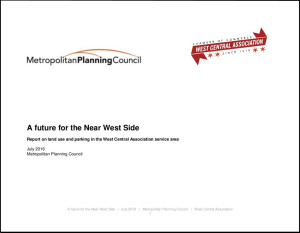
From WCA/MPC Plan Report
Other Recommendations
During the November 30 presentation, a series of additional items were presented by WCA, though they are not included in the report:
- Shift the eastern boundary of the Fulton Market Planned Manufacturing District (PMD) to Ogden Avenue
- Vitalize major corridors, e.g., Madison Street
- Implement infrastructure improvements
- Improve lighting on Lake Street
- Promote technologies to maximize parking
- Establish a high school for the area
- Sustain a farmers’ market
Neighbors of West Loop is supportive of these recommendations, in particular safety improvements on Lake Street and other routes in Fulton Market that the Randolph-Fulton Market Association (RFMA) has proposed and the creation of a West Loop high school.
Conclusion
In general, the recommendations of the WCA/MPC report focus on ways to address development and parking issues that the authors feel limit economic growth in the West Loop and larger WCA service area. Though not a primary goal, many of the recommendations contained in the report may lead to improvements in the quality of life for West Loop residents, a core mission of Neighbors of West Loop. We support these recommendations, but oppose any steps to limit the involvement of the West Loop community in decisions that will affect our residents.
We encourage readers to participate in upcoming workshops related to NoWL’s resident-driven plan for the West Loop known as the Neighborhood Plan. The Neighborhood Plan will incorporate recommendations from the WCA/MPC study that are consistent with NoWL’s positions as well as input received from the community on a wide range of issues, including traffic, parking, development, parks & green space, and public safety.

